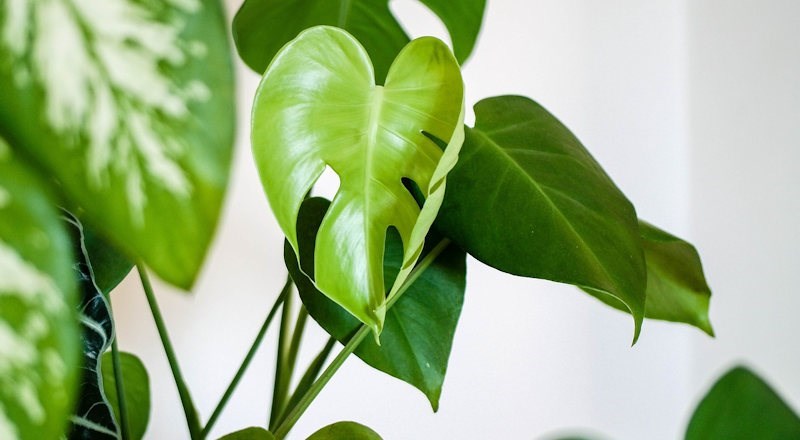Houseplants For the Home
Why add houseplants to your home?
Bringing houseplants into your home can have a wide range of positive impacts on your personal health and environment. It is commonly known that houseplants are great at purifying air and removing toxins, though they hold many more benefits than just that.
Houseplants have fantastic properties, some of which include;
- Boosting mood and concentration
- Creating a productive and creative atmosphere
- Absorbing toxins from the air and increasing oxygen flow
- Bringing colour and life to an empty space
Shop the full range of houseplants at Longacres, here.
The most important conditions for houseplants
Light – each houseplant will have a preference on the light exposure that is most suitable for growth. Some prefer a bright, direct light, whereas others prefer indirect light and partial shade. Some variations of houseplant will burn when left in direct sunlight, and this can damage leaves or flowers.
Water – this is essential for almost all houseplant, though each plant will require different amounts. Under watering can result in dry, brown leaves that easily drop. Overwatering can result in root rot and mould.
Drainage – all houseplants require good drainage. Roots sitting in water can result in root rot. Ensure your plant stays healthy by putting them in containers with drainage holes to let out excess water.
Shop houseplant care at Longacres, here.

Easy to care for houseplants
Snake Plant (sansevieria Trifa) – this plant has stiff, sword shaped leaves, which can range from as small as six inches when fully grown up to eight feet tall. Most commonly found with green banded leaves featuring yellow edges. Thrive in both bright and dark areas, with minimal watering required.
Spider Plant (chlorophytum comosum) – known for their thin and arched leaves, resembling the legs of a spider. They have luscious green and white striped leaves, which can grow as long as 18 inches in length. Fast-growing in warm conditions, but will continue to grow in unfavourable conditions.
Pothos Plant (epipremnum aureum) - arguably one of the easiest houseplants to care for, this plant is known for its heart shaped leaves in yellow, green and white colours. Pothos can be pot growing, trailing or climbing, and will grow year-round.
Air Plant (tillandsia) – air plants are unique for not requiring any soil to survive. They can be maintained with minimal watering and thrive in a high humidity environment.
Succulents (xerophytes) – a plant that comes from a very dry environment, they do not require large amounts of water and are very easy to care for. They prefer loose, well-draining soil and enjoy plant feed during spring or summer.

Houseplants for bathrooms
Finding the right houseplant that will thrive in your bathroom may seem like a difficult task. Bathrooms are often high humidity, low in light and can increase in temperature quickly. Houseplants that are best suited to bathrooms are those that enjoy warm and humid climates, such as the following;
- Pothos
- Air Plants
- Aloe Vera
- Birds Next Fern
- Staghorn Fern

Houseplants for conservatories
Knowing which houseplant to choose to place in a conservatory can be difficult, as these environments often have extreme changes in temperature. During summer, temperatures in conservatories can increase higher than the standard home temperature and light is often high from lots of windows. During the winter however, temperatures can drop to freezing and can be significantly darker than usual.
As this can be a harsh environment for houseplants, many often avoid it altogether. Although, with the correct guidance (and some location movements where necessary), your houseplant can thrive in a conservatory. Our recommendation for the best houseplant for conservatories includes;
- Sarracenia (pitcher plant)
- Strelitzia reginae (bird of paradise)
- Cacti and succulents
- Saintpaulia (African violets)
- Ficus cyanthistipula (fig tree)
One care element to keep in mind is that you may need to move your plant during extreme cold or hot temperatures, to somewhere more suitable. This should be temporary, however, and they can be put back in their original location once the weather is more favourable.
Shop cacti at Longacres, here.
Shop succulents at Longacres, here.

Pet friendly houseplants
Ensuring homes are safe for pets is often one of the main factors considered when looking for houseplants. Fortunately, there are a selection of houseplants that pose no harm to our furry friends, should they come into contact with them.
- African Violets
- Gloxinia
- Baby’s Tears
- Banana Plant
- Spider Plant
- Venus Fly Trap
- Areca Palm







